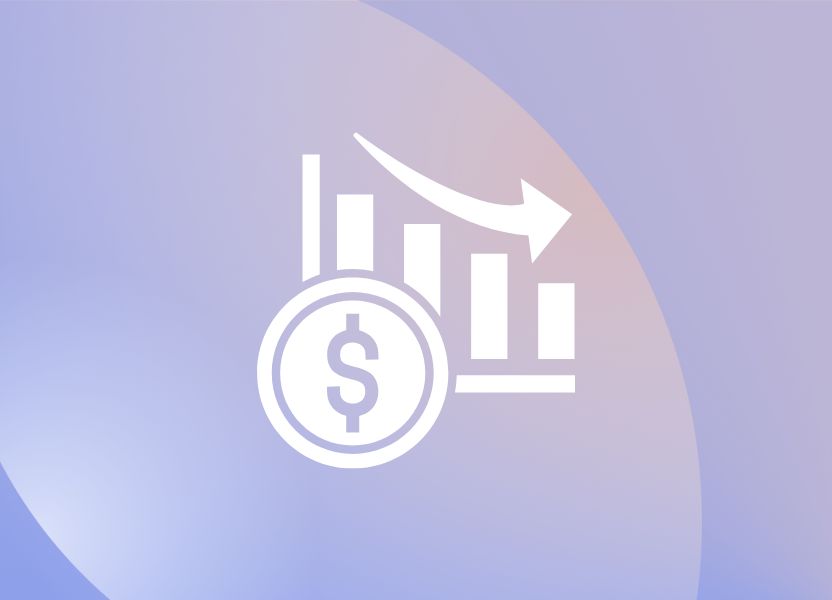Views presented in this blog are the author’s own opinion and do not constitute financial research or advice.
Fraud investigations take a long time, as we’ve noted on various occasions in this blog.
Earlier this month, UK courts set a March 2026 date for the trial of four ex-employees of Patisserie Valerie in relation to the fraud that drove the bakery chain into administration in 2019. Seven years for a chance at justice. Better late than never, one might say.
The re-emergence of Patisserie Valerie in the headlines gives us an opportunity to hold forth on how technology and AI can help company boards prevent such (alleged) malfeasance from occurring.
We’ll show you the warning signs our AI-powered fraud-detection software revealed about Patisserie Valerie’s accounting just before it collapsed.
We will use this to make the case that company boards should install fraud-detection software as a basic element of their internal control processes and demonstration of good governance.
Patisserie Valerie: Before the fraud
First, some background.
Patisserie Valerie opened in London’s Soho in 1926. The Belgian founder, Esther van Gyseghem, famously known as Madame Valerie, ran the patisserie until she retired in 1965. Her descendants eventually sold the business in 1987. The new owners added branches in Piccadilly, Kensington and six other locations.
In 2006, Risk Capital Partners, a PE firm controlled by the former chairman of Pizza Express, Luke Johnson, acquired a controlling stake. In April 2014, the company raised £33 million on the London AIM, funding an expansion of the chain to 192 outlets as of May 2017. By early 2018, the group was generating sales in excess of £100 million, employed almost 3,000 people and was valued at more than £450 million.
A remarkable story of growth from humble beginnings.
On October 10, 2018, the walls came tumbling down. The company announced a material shortfall between its actual and reported financial status. Briefly, management believed it had £24 million in the bank, but was unable to pay a tax bill of about £1 million and was on the verge of bankruptcy.
The CFO was suspended and arrested shortly thereafter. After an internal investigation, the board confirmed it had found "extensive misstatement of its accounts” and "very significant manipulation of the balance sheet and profit and loss accounts" including thousands of false entries in its ledgers.
Profits and cash flow had been overstated and were "materially below" figures announced in the most recent financial statements. The group warned that “without an immediate injection of capital, the Directors are of the view that there is no scope for the business to continue trading in its current form.”
Two days after the announcement, the Serious Fraud Office (SFO) commenced an investigation into the group at the request of the Board, codenamed “Operation Venom.”
Later that day, the company announced a rescue plan under which it would borrow £20 million from the chairman, Luke Johnson, and issue £15 million in shares to raise new capital. The rescue plan prevented the imminent bankruptcy of the company, but wiped out all existing shareholders.
Patisserie Valerie fraud uncovered
On October 14, the chairman announced the discovery of two unauthorised and unreported overdrafts worth almost £10 million. After a wobbly three months, the group entered administration on 22 January 2019, lamenting that its failure was a "direct result of the significant fraud." The liquidator immediately closed 70 of the nearly 200 outlets and concessions operated by the group, leading to the loss of around 900 jobs.
Patisserie Valerie’s auditors were also targeted. In November 2018, the Financial Reporting Council (FRC) launched an investigation into Grant Thornton's audit of the bakery chain.
In November 2020, the joint liquidators issued a claim for damages against Grant Thornton in respect of its audits of Patisserie Valerie’s financial statements from 30 September 2014 to September 2017 inclusive. Grant Thornton was subsequently fined £2.3 million because it had "missed red flags" and failed to "question information provided by management.”
In February 2019, the administrators concluded a management buyout funded by Causeway Capital Partners. The deal valued the group at £13 million, a fraction of the peak valuation.
Fast forward four years: In September 2023, the SFO charged the ex-CFO of the group, his wife, the former financial controller and a former financial consultant to the group with conspiring to inflate the cash in Patisserie Holdings’ balance sheets and annual reports from 2015 to 2018, including by providing false documentation to the company’s auditors.
“During this time, the company also reported holding £28 million in accounts, yet concealed £10 million in debts from its investors and creditors,” the SFO said.
The four defendants will appear in court in April 2024 to enter their pleas.
Insider selling
The company’s financial statements reveal insider selling ahead of the company’s demise. For example, in May 2018, the company reported that the chain was performing well. But a month later, several members of the board sold £7.2 million worth of shares. This represented abnormal activity and should have been questioned by the board.
The company’s declared net cash position of £28.8 million in May appears to have been fabricated by transferring cash from two hidden bank overdrafts worth £9.8 million, which were unknown to the management. The Administrator’s initial take was that the group’s net assets were overstated by approximately £40 million.
A progress report from the administrators, KPMG, some months later in 2019, said that its forensic analysis suggested that the group’s accounts were overstated by approximately £94 million. Within this, the cash position was overstated by £54 million, debts were understated by £17 million and there was also a £23 million discrepancy in the way the group valued its assets.
An unanswered question is whether the accounts were mostly manipulated to make the company look profitable or whether fraud undermined what might have been an otherwise successful company. It remains for the courts to lay blame.
One thing is certain: The Chairman would not have injected further capital had he known the fraud that was taking place.
It is also clear that those committing the fraud covered their tracks well. Interviewed by the Accountancy Age, Gavin Pearson, head of forensic accounting at Quantuma, said the manipulation of the Patisserie Valerie accounts “was extremely extensive, given that even after forensic accountants have been investigating for around three months, the true position has still not been established.”
He described the Patisserie Valerie fraud as “long, complex and well-disguised.” In the same article, Simon Bittlestone, CEO of accounting consultancy Metapraxis, says that the group’s “accounting system had become so complex that it hid any understanding of the underlying business performance.”
The extent of the fraud is all the more remarkable because the controlling shareholder was an experienced operator who understood food businesses extremely well. The fact that the chairman and CFO had worked together on previous successful ventures probably caused him to be less questioning than he otherwise might have been.
Were it not for the unpaid tax bill - a serious blunder - the irregularities might have taken even longer to detect.
Poor internal controls
The SFO alleges that two officers of the Patisserie Valerie board carried out fraudulent activities, presumably for their own benefit. If the company had the correct measures of internal control in place, this misconduct could have been avoided.
Patisserie Valerie had few, if any, fraud prevention and detection methods in place. The clearest failure of internal controls was to allow two overdraft accounts to be authorized by just a single member of the board. There was no risk committee overseeing and verifying bank transactions. In addition, there was no committee overseeing the remuneration of senior staff. In other words, very basic internal controls were missing.
More generally, it is understood that board members come from diverse backgrounds. Most have experience in business but might not have full competency when it comes to scrutinizing accounts. In general, a board will trust the auditor when it comes to spotting material problems in the accounts. But who checks the auditor? In this case there was no audit committee.
Even if there had been an audit committee, what questions might they have asked? If the auditor found nothing material to question, what might non-accountants find? And who would be on that committee? The CFO and the financial controller?
It is not as simple as it sounds for a company board to gain an independent view of the work of an auditor.
Using AI to detect accounting manipulation
One quick solution is for the board of any company to have their accounts run through account-manipulation detection software such as that offered by Transparently.AI.
We would be quick to point out that such software has limitations. It cannot verify if receipts are real, check if there really is cash in different bank accounts at the same time, and cannot check that assets really exist and are worth what a company claims.
In other words, it cannot directly see if the accounts are fabricated, as was the case with Patisserie Valerie. This is the responsibility of the auditor.
If a company outright lies about these things, and if the auditor fails to check, fraud-detection software will struggle to see problems in the places where a company is lying. If a company’s finance department fabricates thousands of invoices to generate fake sales, inflates cash holdings to match those sales and hides large amounts of debt, these aspects will naturally look far better, even to sophisticated accounting software, than they really are.
Few companies fabricate their numbers to the extent of the four allegedly fraudulent finance operatives at Patisserie Valerie.
Thankfully, few companies fabricate their numbers to the extent of the four allegedly fraudulent finance operatives at Patisserie Valerie.
However, even if a company performs a masterful fabrication of its numbers, the numbers will never fully add up. There will always be telltales which suggest something is not right and should be investigated; signs that something material might be wrong.
This is precisely the kind of guidance that a board needs to properly represent the interests of shareholders. It’s the type of guidance that an AI-driven fraud detection software can provide.
Patisserie Valerie accounting risk: What our AI software revealed
Let’s see how Patisserie Valerie appeared to our software after the 2017 financial statements were published. For those of you new to Transparently.AI, our AI-driven software analyzes a company's publicly disclosed financials and produces a 0-100% score which is the likelihood of the company manipulating its accounts.
We also produce a 20-plus page report on all the accounting signals that our system picks up from its analysis of a company's numbers. Figure 1 offers a snapshot of the overview from the full report for Patisserie Valerie for that year.
Figure 1: Excerpt from Patisserie Valerie’s full accounting report for 2017

Source: Transparently.AI
The overview doesn't look too bad: there is only a one "high caution" signal and five signals to "investigate further."
However, the overall risk score on the account manipulation system for Patisserie Valerie - 51% - would have raised some eyebrows. That put it at the 78th percentile for all companies in Western Europe. In simple terms, the company was almost in the bottom 20% for manipulation risk.
The risk score was bad even though the company’s allegedly fraudulent accounts appeared healthy. With loads of cash supposedly in the bank and oodles of free cash flow, the cash quality appeared solid. Furthermore, there was little strain evident in the working capital and gearing. Credit quality, although worthy of investigation, also looked much better than it really was.
Based on the reported numbers, this was reasonably solid little company from a liquidity and balance sheet perspective. The system found little evidence of the strain that becomes apparent in the accounts when a company is smoothing its earnings and aggressively exploiting accruals.
On the surface, Patisserie Valerie looked pretty good. But AI software digs deeper than that.
All of the factors that Patisserie Valerie fabricated were rated as low risk. To be sure, if a small company with £100 million in annual sales apparently has £28.8 million in net cash, cash quality will look pretty good. If sales and cash flow are fabricated, you can be sure income quality will also look good. If debt is hidden, gearing risk will be low.
In spite of these fabrications, however, Patisserie Valerie exhibited a poor risk score for 2017. That's because AI software digs deeper than the headline numbers.
Patisserie Valerie accounting red flags
If shenanigans are present, the detail of the risk assessment will reveal problems. Figure 2 summarizes the key signals for Patisserie Valerie from the same year.
Figure 2: A summary of key signals from Patisserie Valerie in 2017

Source: Transparently.AI
At the top of the list, we find “Business Manipulation” rated as “High Caution”. To put this in perspective, we rarely see a company with a high caution rating for business manipulation on our system. Even among the worst accounting scandals of all time, only Enron had a very high risk of business manipulation risk.
We rarely see a company with "high caution" for business manipulation on our system.
If we see a risk of business manipulation this high, it is typically in companies with a risk score above 80%. To see it in a company with a risk score of 51% immediately suggests something might be seriously amiss with the accounts.
It is the equivalent of seeing smoke emanating from an aircraft engine. Someone should tell the captain, someone should tell the board.
We won’t delve into all of the signals for Patisserie Valerie. Suffice it to say that Patisserie Valerie exhibited signs of manipulated cash flow, revenue and asset values. Of all the signals that our system generates, those for cash flow manipulation and asset quality are among the most serious because when cash flow is out of whack with other accounting measures, and assets show signs of improper capitalization of expense, these are typically the most aggressive forms of account manipulation.
Patisserie Valerie: Abnormal cash flow
Let’s consider just one example. In the case of Patisserie Valerie, the system identified “Abnormal Cash Flow.” That is, it identified an abnormal relationship between Patisserie Valerie’s cash flows, its own sales performance and that of its peers.
In particular, the system identified abnormalities in the absolute value of abnormal cash flows relative to the absolute value of total cash flows. The amount of abnormal cash flow was exceptionally high.
The company appeared to be making too much cash and its sales appeared unrealistically strong in relation to the industry.
This signal implies a high risk of sales and cash flow manipulation. It also has negative implications for other risk factors such as indicators of cash quality and income quality.
Right off the bat, the very first signal issued by the accounting software said there was a potential problem with the reporting of cash flow and sales. Not only that, it identified one the most serious risks we ever encounter in forensic accounting, that of fake cash.
The signals for abnormal production and production manipulation are basically saying that the company did not incur enough costs to generate the level of sales that it claimed. Again, the system is saying the company might be misstating its sales.
The signals for asset quality – intangibles and discontinued operations – also suggest that the company is capitalizing expenses to hide costs and inflate the value of its balance sheet.
The case for AI-powered fraud detection
The bottom line for Patisserie Valerie is simply this: Any board member possessing a basic knowledge of accounting with access to results of our software would have entertained serious doubts about the veracity of this company’s accounts.
The system flagged risk of misstatement of cash, revenue and asset value. These are among the worst types of account manipulation because they can cause failure. Any responsible board would request a deeper investigation by its auditor upon seeing these signals.
In the case of Patisserie Valerie, similar signals were flagged in 2015 and 2016. It is highly likely that a board using fraud detection software could have saved the catastrophic losses experienced by Patisserie Valerie’s shareholders.
Company boards should use fraud detection software.
Disclaimer: Both the author and Transparently Pte Ltd do not have trading positions in the companies it expresses a view of. In no event should the author or Transparently Pte Ltd be liable for any direct or indirect trading losses caused by any information contained in these views. All expressions of opinion are subject to change without notice, and we do not undertake to update or supplement this report or any of the information contained herein.












